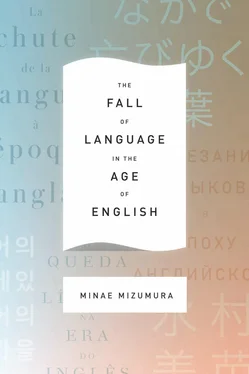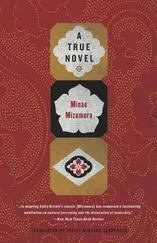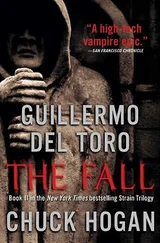Let’s take my mother as an example.
Everyone is young once. Even my mother, who now walks with a cane, was a young woman before World War II. Like other modern city girls of the day, she passionately loved everything Western — music, fashion, food. It didn’t matter what it was, she just loved it all. And this was because she loved reading foreign novels (in translation) and watching foreign films. Gérard Philippe and Gary Cooper were her Prince Charmings. My mother no doubt identified with the heroines on the silver screen and whispered softly to herself: “I am just as beautiful, just as elegant, just as passionate as them. Someday someone will fall head over heels in love with me, too; I will be loved, just like them.” Yes, my mother was a bit vain when it came to her looks (and she still is).
Yet how different her life was from the lives of those heroines! She lived in a small row house made of wood and paper. She slept on the floor, on a thin futon, and not on the bed that she kept pleading for. But above all, her daily humiliation and frustration revolved around the presence of her mother — my grandmother — who was old, shamelessly shabby looking, and virtually illiterate. A former geisha, my grandmother could play the shamisen , a traditional three-stringed musical instrument; she could also perform traditional Japanese dance. But, alas! She couldn’t even make an omelette! Naturally, she’d never read a single European novel. When she had to accompany my mother to movie theaters playing foreign films — girls’ schools often required an adult chaperone — she wouldn’t understand a thing and would immediately fall asleep. She would even snore. My mother’s eyes would fill with tears. But this was the life my mother had to live. What a wretched life! The novels and films that gave her so much joy also inflicted on her no small amount of pain.
You will tell me that there always exists a chasm between the world depicted in novels and films and the world that people actually live in. It is the chasm between the world mediated by art and the world unmediated by art, formless and drab. You are absolutely right. The gap that my mother felt was not necessarily any deeper than the gap felt by a European girl who loved books and films. Yet there is one critical difference. For in my mother’s case, the chasm between the world of art and real life also symbolized something more: the asymmetrical relationship I mentioned earlier — the asymmetrical relationship between those who live in only a universal temporality and those who live in both a universal and a particular one.
To make this discussion a little more concrete, let me introduce a character named Françoise. Françoise is a young Parisienne living before World War II. Like my mother, she loves reading books and watching films. Also like my mother, she lives in a small apartment with her mother, who is old, shabby looking, and illiterate. One day Françoise, full of artistic aspirations, writes an autobiographical novel. It is the tale of her life torn between the world of art and the world of reality. (Not an original tale, I must say.) The novel is well received in France. Several hundred Japanese living in Japan read this novel in French, and one of them decides to translate it into Japanese. My mother reads the novel. She identifies with the heroine and says to herself, “This girl is just like me!” Moved, my mother, also full of artistic aspirations, writes her own autobiography. That novel is well received in Japan but is not translated into French — or any other European language, for that matter. The number of Europeans who read Japanese is just too small. Therefore, only Japanese readers can share the plight of my mother’s life. For other readers in the world, it’s as if her novel never existed. It’s as if she herself never existed. Even if my mother had written her novel first, Françoise would never have read it and been moved by it.
The difference between Françoise and my mother demonstrates the fundamental difference created by the asymmetrical relationship. Those who live only in the universal temporality can make their voices heard by the world. Those who simultaneously live in the universal and particular temporalities may hear voices from the other side, but they cannot make their own voices heard. They can only participate passively in the universal temporality, however much they may wish otherwise. This asymmetry can ultimately be reduced to the asymmetry between the two languages. French, and not Japanese, was the common language between the two. And this linguistic asymmetry itself can ultimately be reduced to a numerical asymmetry. In my mother’s lifetime, for every French person who read Japanese there were hundreds of thousands of Japanese people who read French and could translate it. The fact that far more Japanese read both languages formed the very condition and base of the asymmetrical relationship between the universal and the particular.
Did all this asymmetry discourage Japanese writers from writing in Japanese, in a language so devoid of universality? The answer is no. On the contrary, Europe inspired them with a concept they had not known before: that of national literature. Europe, needless to say, is far from being a monolithic entity. Through the course of history, European people gradually came to live in the common temporality, but Europe itself has long been a region characterized by cultural and, more important, linguistic diversity. Naturally, that diversity was not lost on the Japanese when they joined humanity. Writers read a variety of European languages; translators translated from an even greater variety. This linguistic diversity in Europe reinforced in the minds of the Japanese the newly imported concept of national language , a language inseparably linked to a nation-state, founded — supposedly — on common ethnic blood and history. This concept of national language , in turn, reinforced in the Japanese mind the newly imported concept of national literature , particular to each nation-state. Japanese writers — who had no choice but to live in the two temporalities, to live in the asymmetrical relationship, and to remain silent in universal temporality — could at least identify with European writers, for like them they too were writing for their national literature. They wrote with great passion, leading to the flowering of Japanese literature, and a handful of those works became known in the West through translation.
Then everything changed, as the rise of English gradually called into question the significance of writing for a national literature.
When did the change start?
Back when Columbus discovered America in 1492, Portugal and Spain controlled the seas. Even when England defeated the Spanish Armada in 1588, nothing was yet determined. When Puritans from England arrived on the American shore in the Mayflower in 1620, Spanish, French, and Dutch colonists were also settling on the shores of the same continent, and the Dutch, by then the dominant sea power, were engaged in the world’s first global commerce through the Dutch East India Company. England became the dominant sea power only in the eighteenth century; but the eventual triumph of the English language was still by no means assured. Ironically for you French ladies and gentlemen, the fate of your language may have been sealed by your having been ahead of your time and leading the rest of Europe with your revolution of 1789. The French Revolution gave rise to the formation of coalitions among European monarchs to attack the newly created republic, leading to the Napoleonic Wars. And it might well have been the consequences of these Napoleonic Wars, themselves the consequences of the French Revolution, that destined the English language to replace French eventually as the most powerful universal language.
Читать дальше












